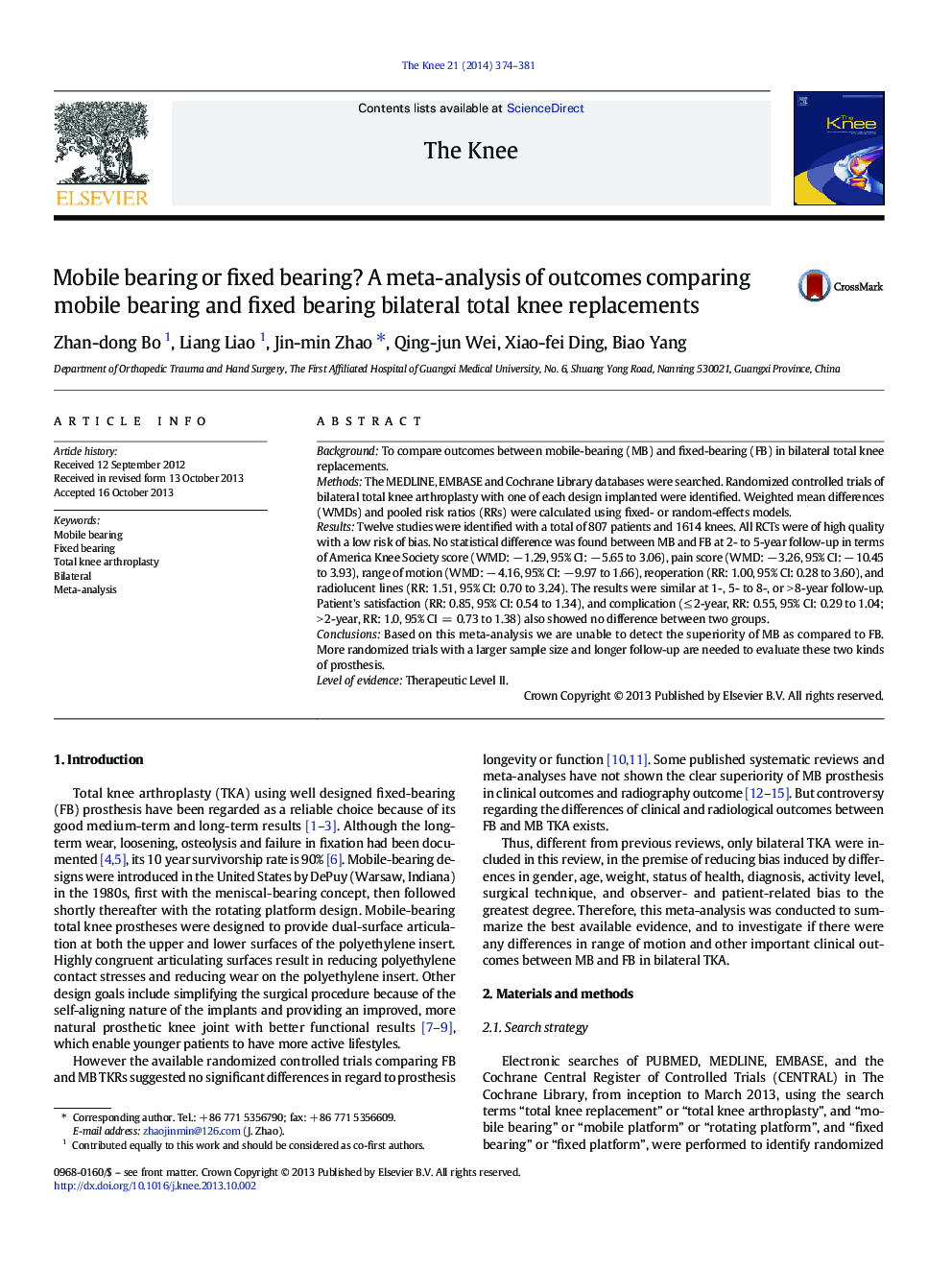| Article ID | Journal | Published Year | Pages | File Type |
|---|---|---|---|---|
| 4077492 | The Knee | 2014 | 8 Pages |
BackgroundTo compare outcomes between mobile-bearing (MB) and fixed-bearing (FB) in bilateral total knee replacements.MethodsThe MEDLINE, EMBASE and Cochrane Library databases were searched. Randomized controlled trials of bilateral total knee arthroplasty with one of each design implanted were identified. Weighted mean differences (WMDs) and pooled risk ratios (RRs) were calculated using fixed- or random-effects models.ResultsTwelve studies were identified with a total of 807 patients and 1614 knees. All RCTs were of high quality with a low risk of bias. No statistical difference was found between MB and FB at 2- to 5-year follow-up in terms of America Knee Society score (WMD: − 1.29, 95% CI: − 5.65 to 3.06), pain score (WMD: − 3.26, 95% CI: − 10.45 to 3.93), range of motion (WMD: − 4.16, 95% CI: − 9.97 to 1.66), reoperation (RR: 1.00, 95% CI: 0.28 to 3.60), and radiolucent lines (RR: 1.51, 95% CI: 0.70 to 3.24). The results were similar at 1-, 5- to 8-, or > 8-year follow-up. Patient's satisfaction (RR: 0.85, 95% CI: 0.54 to 1.34), and complication (≤ 2-year, RR: 0.55, 95% CI: 0.29 to 1.04; > 2-year, RR: 1.0, 95% CI = 0.73 to 1.38) also showed no difference between two groups.ConclusionsBased on this meta-analysis we are unable to detect the superiority of MB as compared to FB. More randomized trials with a larger sample size and longer follow-up are needed to evaluate these two kinds of prosthesis.Level of evidenceTherapeutic Level II.
